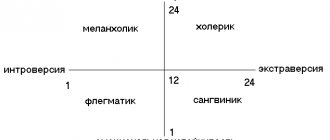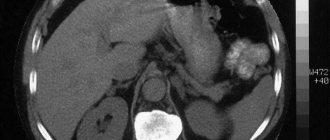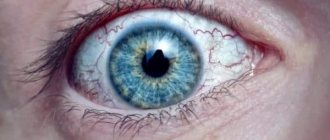Every person has pauses in breathing, even those who confidently deny them - at least once in their life. Are they dangerous? It all depends on the frequency and duration of the phenomenon, as well as on his lifestyle and much more. What to do if you feel like your breathing stops when you fall asleep? How do you know if this is normal or if it’s time to see a doctor? What can and should you do yourself? What can sleep apnea lead to (this is what the phenomenon of stopping breathing during sleep is called) if it is not treated? I will answer these and other questions today.
Good afternoon, dear reader!
Breathing is life, and the slightest problems in respiratory activity can cause a significant deterioration in the quality of life. Sleep apnea is one such phenomenon.
First, let's look at the reasons.
How to cope with anxiety and fear caused by sleep apnea?
One woman told me that it was not the sudden stops in breathing at night that frightened her (she often woke up because of this).
What frightened her most was the state of extreme anxiety and fear, the feeling that her heart was squeezing, as if her chest was being squeezed from several sides.
I am sure that she was not the only one who woke up from respiratory arrest and felt these unpleasant emotions of anxiety and worry.
Such emotions are not only unpleasant, they are also extremely harmful for a person at such a moment. The thing is that anxiety contributes to a strong heartbeat, which, in turn, increases the body’s need for oxygen.
As you understand, a person suffering from sleep apnea should not panic (although sometimes this is extremely difficult). It is iron calm that can facilitate the treatment of sleep apnea.
My online training “How to cope with stress, turning it from a monster into a helper” will help you develop such calmness and increase stress resistance. The training is written in such a way that completing each task will make you look differently at the surrounding reality and finally understand the true reasons for your experiences.
Well, we're a little distracted. Let's return to today's topic - what to do if breathing stops while falling asleep?
How to determine when the body can cope on its own, and when consultation with a specialist is necessary?
Associative series
Depending on which hemisphere is active at a given time, it depends on which way of thinking a person uses: logical or associative.
During sleep, as is known, associative thinking dominates over logical thinking. If, intentionally or unintentionally, near a sleeping person, for example, you spill water or ring a bell, then somehow these noise effects will be woven into the fabric of the dream. And it doesn’t matter in what phase of sleep the dream occurs: paradoxical or slow. When a person wakes up, he may remember that he dreamed of a river or that he was caught in a rainstorm.
However, a slight difference still exists: if dreams occur in the slow-wave sleep phase, then it is more difficult to influence their content, the longer the dream is in time.
There is another subtle point here: if a person, while falling asleep, has tuned in to a certain stimulus, then when it is activated, even if the person is in the slow-wave sleep phase, he will wake up.
Conclusion:
- The subconscious is able to evaluate external events during a night's rest, and also include these events in the imagery of a dream.
- Dreams seen during the paradoxical phase are remembered better.
SLEEP DISORDERS
Sleepwalking and night terrors
are associated with impaired activation and most often occur at the beginning of the night, when stages 3 and 4 predominate. Both of these disorders usually last only a few minutes. When sleepwalking, a person often wanders around the same place, confusion is written on his face, and his actions are uncoordinated. Previously, it was widely believed that a sleepwalker seemed to be acting out his vivid dreams, but sleepwalking usually occurs during non-REM sleep (in stages 3 and 4). Night terrors are accompanied by a shrill cry, motor and autonomic excitation. The heart rate increases sharply, sometimes a person with a crazy look, screaming, quickly runs out of the room. Children usually forget these episodes completely, while adults retain only fragmentary memories. Both types of disorders are more common in childhood and are likely associated with delayed maturation of the central nervous system.
Nightmares
– states of intense anxiety and fear that arise at night, associated with vivid, emotionally rich dreams. This is a common cause of sleep disturbances, since people, having woken up from a nightmare, do not sleep for a long time, afraid of falling asleep again or analyzing what they saw in their dreams. Nightmares, which are essentially dreams, occur during REM sleep and are distinct from night terrors associated with stages 3 and 4. Nightmares in children are a manifestation of their emotional maturation; they reflect temporary difficulties in distinguishing between reality and fantasy. Nightmares in adults are more often associated with psychological factors.
Nocturnal enuresis
Nocturnal enuresis, or urinary incontinence during sleep, also occurs during non-REM sleep. Although leakage of urine is possible at any time of the night, it is most often observed in the first third of the night, when stages 3 and 4 predominate. Most episodes occur in stage 4, with urination beginning as stage 2 or stage 1 progresses. If a person wakes up at this moment and changes his underwear, he cannot report any dreams and, upon falling back to sleep, will have a normal sleep structure. If it remains wet, then stages 3 and 4 do not appear for several hours, and if the person wakes up in the subsequent period with REM, he may remember fragments of dreams associated with incontinence.
Narcolepsy, hypersomnia, sleep apnea.
Disorders characterized by pathological sleepiness include narcolepsy and various types of hypersomnia, including those associated with sleep apnea. Narcolepsy manifests itself as short-term, sudden attacks of irresistible drowsiness. In most cases, patients also experience cataplexy (sudden relaxation of muscles), and attacks of falling asleep are accompanied by the appearance of the same changes on the EEG as during REM sleep.
Unlike narcolepsy, with hypersomnia, periods of increased daytime sleepiness and bouts of falling asleep are usually longer and last from one to several hours. This disorder is caused by both psychological and organic factors. The most studied form of periodic hypersomnia is Kleine-Lewin syndrome; it occurs more often in young men and is accompanied by increased appetite. Hypersomnia may also be associated with impaired brain function due to a tumor, vascular lesion, encephalitis, toxic encephalopathy, endocrine or metabolic disorders.
Apnea (cessation of breathing) during sleep is characterized by a complete cessation of gas exchange, lasting more than 10 seconds, sometimes more than 1 minute. The exact cause of this condition is unknown, but it may be due to cessation of chest movement, obstruction of the upper airway, or a combination of these factors. It is often accompanied by increased sleepiness during the day. Mild cases of sleep apnea can be treated with medications and weight loss. Severe cases sometimes require surgery.
Insomnia (insomnia).
There are three types of insomnia: with the first of them (the most common), falling asleep is disrupted, with the second - maintaining sleep, with the third, early and final awakening is noted. The causes of insomnia are varied. It may occur in response to transient stress, chronic emotional conflict, or physical illness. Insomnia is often caused by psychostimulants and even caffeine contained in coffee or Coca-Cola, and sometimes by disruption of the usual routine. Sleep disorders often occur during the aging process. Various factors contribute to the development of chronic insomnia, including emotional conflicts, incorrect (maladaptive) reaction to stress, constant anticipation of poor sleep and associated anxiety. Effective treatment of chronic insomnia requires a comprehensive approach and includes psychotherapy, behavioral therapy and, as an additional measure, the judicious use of medications.
Stages of slow-wave sleep and REM sleep
The main findings from years of numerous and varied sleep studies are as follows.
Sleep is not a break in brain activity, it is simply a different state. During sleep, the brain goes through several different phases, or stages, of activity that repeat in approximately one-and-a-half-hour cycles.
Sleep consists of two qualitatively different states called NREM and REM sleep. They differ in total electrical activity of the brain (EEG), eye motor activity (EOG), muscle tone and numerous vegetative indicators (heart rate and respiration, electrical activity of the skin, etc.).
NREM sleep is divided into several stages, identified on the basis of EEG changes and differing in depth. In the first stage, the main bioelectrical rhythm of wakefulness, the alpha rhythm, disappears. It is replaced by low-amplitude oscillations of various frequencies.
This is the stage of drowsiness, falling asleep. In this case, a person may experience dream-like hallucinations. The second stage (shallow sleep) is characterized by the regular appearance of a spindle-shaped rhythm of 14–18 vibrations per second (“sleepy” spindles).
With the appearance of the first spindles, consciousness switches off; During pauses between spindles, a person can easily be awakened.
The third and fourth stages are combined under the name delta sleep, because during these stages high-amplitude slow waves - delta waves - appear on the EEG. In the third stage, they occupy from 30 to 50% of the entire EEG.
In the fourth stage, delta waves occupy more than 50% of the entire EEG. This is the deepest stage of sleep, here the highest threshold of awakening, the most powerful disconnection from the outside world.
When waking up at this stage, a person has difficulty finding his bearings and compresses time to the greatest extent (underestimates the duration of the previous sleep).
Delta sleep predominates in the first half of the night. At the same time, muscle tone decreases, breathing and pulse become regular and slow, body temperature decreases (by an average of 0.5°), eye movements are absent, and a spontaneous galvanic skin reaction can be recorded.
Did not you find what you were looking for?
Teachers rush to help
Diploma
Tests
Coursework
Abstracts
REM sleep is the very last stage in the sleep cycle. It is characterized by fast, low-amplitude EEG rhythms, making it similar to the waking EEG. Cerebral blood flow increases, and against the background of deep muscle relaxation, powerful activation of autonomics is observed.
In addition to the tonic components of the REM sleep stage, phasic components are detected - rapid movements of the eyeballs with closed eyelids (REM, or REM - rapid eye movements), muscle twitching in certain muscle groups, sudden changes in heart rate (from tachycardia to bradycardia) and breathing ( a series of frequent inhalations and exhalations, then a pause), episodic rises and falls in blood pressure, erection of the penis in men and the clitoris in women.
The awakening threshold ranges from high to low. It is at this stage that most memorable dreams occur. Synonyms for REM sleep are paradoxical (activated EEG pattern with complete muscle atonia), REM, or REM sleep, rhombencephalic (due to the localization of regulatory mechanisms).
The entire night's sleep consists of 4-5 cycles, each of which begins with the first stages of slow sleep and ends with REM sleep. Each cycle lasts about 90–100 minutes. In the first two cycles, delta sleep predominates; episodes of REM sleep are relatively short.
In the last cycles, REM sleep predominates, and delta sleep is sharply reduced and may be absent. Unlike many animals, humans do not wake up after each sleep cycle. The structure of sleep in healthy people is more or less similar - stage 1 occupies 5-10% of sleep, stage 2 - 40-50%, delta sleep - 20-25%, REM sleep - 17-25%
Thus, every night we dream 4-5 times, and “looking at” dreams takes a total of 1 to 2 hours. People who claim that they dream very rarely simply do not wake up in the dreaming phase. The intensity of the dreams themselves, the degree of their unusualness and emotional richness may vary, but the fact of their regular occurrence during sleep is beyond doubt.
The idea, widespread in the past, that sleep is necessary for the “rest” of brain neurons and is characterized by a decrease in their activity, has not been confirmed by studies of neuronal activity. During sleep, in general, there is no decrease in the average frequency of neuronal activity compared to the state of quiet wakefulness.
In REM sleep, spontaneous neuronal activity can be higher than in intense wakefulness. In slow and fast sleep, the activity of different neurons is organized differently.
In addition to electrophysiological ones, certain stages of sleep are characterized by certain hormonal changes. Thus, during delta sleep, the secretion of growth hormone, which stimulates tissue metabolism, is increased. During REM sleep, the secretion of hormones from the adrenal cortex is increased, which increases during wakefulness under stress.
The intensity of energy metabolism in the brain tissue during slow-wave sleep is almost the same as in a state of quiet wakefulness, and during REM sleep it is much higher.
Thus, it can be argued that the brain is active during sleep, although this activity is qualitatively different than during wakefulness and has its own specifics at different stages of sleep.
What stage of sleep is best to wake up in?
It is best to wake up at the end of the REM phase of sleep, when one cycle gives way to another. It is difficult to catch this moment without special devices. Therefore, it is better to use modern sleep trackers . Gadgets track body movements and pulse, thereby determining the stage and phase of sleep. As soon as the REM phase is about to end, the sleep tracker wakes the user up. The transition from the fast phase to the slow phase is the ideal time to wake up.
At the beginning or middle of the fast phase, the body is ready to awaken. Therefore, waking up at this time makes it easier to get out of bed than when waking up at other times.
How to choose a suitable sleep tracker - read
You can determine the time of easy awakening without gadgets. To do this, you need to follow a sleep schedule and independently calculate the duration of each cycle. The method is inaccurate. If you don't follow the routine, your sleep cycles and phases may shift. Therefore, when calculating mathematically when REM sleep occurs, you can make a mistake and set the alarm clock for the time of the slow phase.
You can also wake up refreshed in the slow phase, but only during the period of light or shallow sleep (2nd stage of the slow phase). After 6-7 hours of sleep (on cycle 3-4), waking up should be easy. In this case, a feeling of drowsiness may be present.
In the deep stage of slow-wave sleep, it is most difficult to wake up. Awakening from this phase will ensure weakness and fatigue at least in the first half of the day. As a rule, difficult awakening during the deep phase is typical for sleep of less than 5 hours.
You probably noticed that when you woke up after 6-7 hours, you felt energetic and wanted to get out of bed. But we decided to sleep a couple more hours, and then woke up with difficulty. So, the first awakening was in the fast phase, and when you woke up a second time, you interrupted the deep stage of slow sleep.
Eye movement during sleep
Researchers have found that the speed of eye movement indicates that a person is in the paradoxical or slow-wave sleep phase. So, let's move on to the question of the duration of a person's sleep phase in time, taking into account the movement of his eyes.
- Phase No. 1: the primary stage of going to sleep with the gradual shutdown of the body's control systems - FMS-1. It can be called a light nap, and its duration varies from 5 to 10 minutes.
- Phase No. 2: the appearance of the first signs of light sleep, namely: relaxation of the body muscles and subtle eye movements. It is this phase - FMS-2 - that gives you dreams that are especially memorable for their brightness and storyline.
- Phase No. 3: the activity of brain waves slows down, eye movements are not recorded, muscles are usually relaxed, but if the plot of the dream suggests intense actions, then this becomes noticeable by the increasing tension in the muscles of the sleeper. This is the time of combined FMS-3 and FMS-4, which is otherwise called “delta sleep” - a deep stage from which, upon awakening, no impressive memories remain, but the body manages to restore energy and produces growth hormone.
And then - everything is in countdown order: FMS-3; FMS-2; FMS-1. The path from FMS-2 to FMS-1 is accompanied by increasing eye movement; it is also called the period of rapid eye movement, or REM. But the level of relaxation of the body muscles will be extremely high. And it is during this phase of rapid eye movement sleep, or FBS (known as “paradoxical sleep”), that you see dreams that are brightly colored, highly emotional, and realistic.
If we consider that the time allotted to each cycle is 90 minutes, then during the night's rest we can go through 6 cycles. However, by morning, sleep balances at the FBS level.











